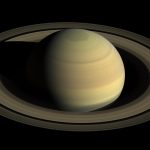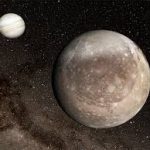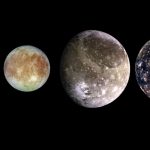Where were Jupiter and Saturn born?0
- From Around the Web, Space
- November 3, 2020
An additional planet between Saturn and Uranus was kicked out of the Solar System in its infancy

An additional planet between Saturn and Uranus was kicked out of the Solar System in its infancy
NASA’s Juno spacecraft has been in orbit around Jupiter since 2016. One of its instruments is the ultraviolet spectrograph (UVS), which is primarily used to make ultraviolet images of Jupiter’s auroras. During the first four years of the mission, the UVS instrument has observed 11 transient bright flashes. These flashes look similar to lightning, but are located much higher in the atmosphere than the cloudy regions of Jupiter where lightning is generated. In a paper published in the Journal of Geophysical Research: Planets, researchers suggest that these are observations of transient luminous events in the gas giant’s upper atmosphere. In particular, they suggest that these events are elves, sprites or sprite halos, three types of transient luminous events that produce spectacular flashes of light very high in the Earth’s atmosphere in response to lightning strikes between clouds or between clouds and the ground.

Astronomers using the Atacama Large Millimeter/submillimeter Array (ALMA) have spotted airborne plumes of sulfur dioxide (SO2), sulfur monoxide (SO), and potassium chloride (KCl) from Io’s active volcanoes.

Scientists believe that Jupiter may be the reason Venus can’t have nice things.

NASA has published the most recent up-close image of Jupiter, the massive planet covered with beautiful, terrifying storms.

Scientists have discovered what they believe may be the largest impact crater in the entire solar system, with scars covering a vast portion of Jupiter’s biggest moon, Ganymede.

Gravitational kneading from the mammoth planet is not the satellites’ only source of heat

The flashes of light could form thanks to ammonia antifreeze

It’s neither an asteroid nor a comet but something in between. It’s also parked within Jupiter’s orbit, making this object the first of its kind to ever be detected.

Multiwavelength observations from the NASA/ESA Hubble Space Telescope and Gemini Observatory combined with close-up views from NASA’s Juno spacecraft reveal that lightning strikes and huge storm systems that create them in Jupiter’s atmosphere are formed in and around large convective cells over deep clouds of water ice and liquid; the observations also confirm that dark spots in the famous Great Red Spot are actually gaps in the cloud cover and not due to cloud color variations.